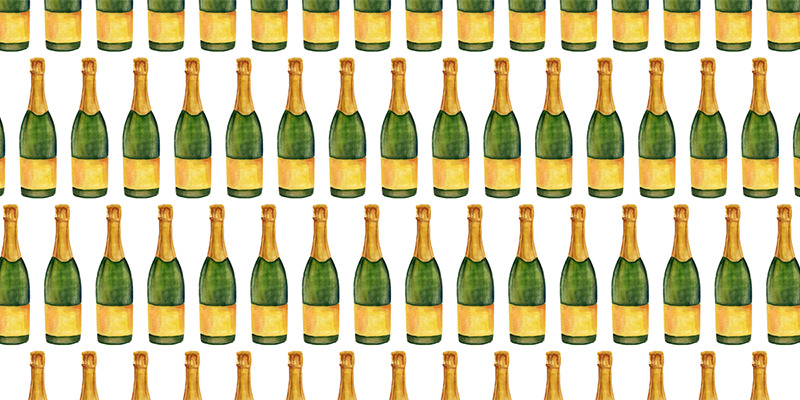If you’re drinking a bubbly from Italy, there is a very strong chance that bubbly is Prosecco, but did you know that there’s another bubbly from Italy that goes by a different name, Franciacorta, and has more in common with Champagne than Prosecco? Let us help you get to know these two delicious and distinctly different bubbly Italian charmers.
What primarily sets Prosecco and Franciacorta apart is the way each of the wines is made. In the case of Prosecco, the wine is made using what is known as the Charmat or Martinotti method. Looking for a faster and cheaper way to create quality sparkling wine, Frenchman Eugene Charmat and, separately, Federico Martinotti in Italy, discovered what is now known as the Charmat-Martinotti method. In this method, the wine is transferred from its first fermentation vat to a large sealed pressurized tank where it undergoes secondary fermentation to create the carbonation. Then the carbonated wine is bottled and shipped to market. The result is a wine that is bubbly, but also a bit fruitier and fresher than its Franciacorta counterpart.
Franciacorta, on the other hand, is made the exact same way winemakers in France make Champagne. Known as the Method Champenoise or the Traditional Method, Franciacorta receives its bubbles by allowing a secondary fermentation to occur in the bottle. During this fermentation the CO2 that’s created is absorbed into the wine, instead of escaping as it does when fermentation occurs in a tank, and this creates the bubbles we’ve come to love in Champagne. This process also usually means the wine is drier with a more yeasty and less fruity character than its Prosecco counterpart. This “sur lie” aging is what many say makes wines made in this way more complex.
Another distinct difference between Prosecco and Franciacorta is the grapes used to make each of the wines. In Prosecco the grape is Glera, a white grape that has been grown in the Veneto and Friuli regions for hundreds of years. It’s a grape with high acidity, which makes it perfect for bubbly.
Franciacorta, on the other hand, prefers to use Chardonnay, Pinot Noir and Pinot Blanc, grapes also used to make Champagne. Franciacorta — it’s the name of the wine and the name of the region where it’s made — is a warmer region than chilly Champagne, so the grapes are riper and fuller, resulting in a wine that doesn’t have the same zest or minerality that Champagne does.
The final difference between these two sparkling wines is how long each has been made. While Prosecco has been produced for hundreds of years, Franciacorta has only been around for a little over 50 — the wine was first made in 1961.
But none of these differences really matter as long as you like how one, or both of them, taste.

